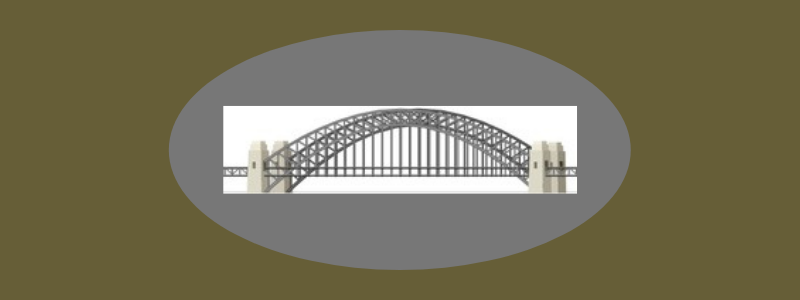Bridging Construction: A Project Delivery Method
OVERVIEW OF “BRIDGING” CONSTRUCTION
A Method Of Project Delivery
CONCEPT
“Bridging” is a hybrid of Design/Build and traditional Design-Bid-Build. The selection of the Project Delivery System, i.e. how you are going to get your facility designed and built, has a great impact on the outcome of the project because it determines the environment in which issues of quality, cost and schedule will be decided.
Bridging was popularized by George Heery. Bridging saves time and money as compared to Design-Bid-Build. Bridging controls costs as compared to Design/Build by getting a defined cost for a defined scope of work, rather than a defined cost for an undefined scope of work.
The Steps of the Process are somewhat familiar and fall into the three phases listed below.
DESIGN PHASE
In all project delivery systems, a Schematic Design comes first. The Site-Related Permits should be resolved as soon as a site plan can be agreed upon. These are permits such as zoning, wetlands, storm water, highway encroachment.
Defined Scope
A key feature of Bridging is that you have a well-defined scope of the project which is represented by the Design Phase drawings and specifications which include the bidding documents. The Design Phase in Bridging normally requires more than a Schematic Design Phase but not necessarily as much as a Design Development Phase.
Schematic Design documents for a Design/Build project delivery are notoriously vague, but there is a fixed construction cost. Whenever that vagueness doesn’t produce the result that is needed, the construction cost goes up. Even a Guaranteed Maximum Price clause crumbles before these “changes in scope”.
With Design-Bid-Build, when Schematic Design documents are complete you have the architect’s estimate of costs; but it could be month’s before you have the hard numbers that bidding brings.
SELECTION PHASE
For public projects, which require open bidding, the Owner or Architect solicits bids from Design/Builders in a process similar to the normal bidding process:
• Place a legal advertisement in the newspaper and place the bidding documents on file with Dodge Reports. Specific Design/ Builders might be contacted informally to make sure they are aware of the project.
• Potential bidders obtain bidding documents which describe the project in detail and specify what will be required of them – bonds, insurance, previous experience, specific time for completion, etc.
• Sealed bids are received at a public bid opening.
Based on the submitted information and reference checks, the best bid is awarded the contract. The Contract is based on an industry standard – the American Institute of Architects Document A191, Part II, Standard Agreement Between Owner and Design/Builder.
CONSTRUCTION PHASE
The Final Design for the project is prepared by the Design/Builder or his associated design firm which provides for:
• Verification of Scope.
• Obtaining Building Permits.
• Construction Drawings.
During this phase, the Owner and their architect review and approve all documents. The Owner and their architect provide overview of the building permit process. The Owner and their architect review Submittals and Construction to verify Proper Scope and Quality.
There is also review of progress to verify that the schedule is being met and that the amounts of pay requests are legitimate. The Architect is available to assist with the management of any changes that are made or that are suggested by the Owner.
The Design/Builder who is awarded the bid is completely responsible for design and construction of the project so you have one point responsibility for any issues which arise. The Design/Builder cannot increase the cost of the project unless the Owner requests changes.
The Steps Of The Process When Bridging Construction
Hire the architect.
Work with the architect to develop a concept of how the spaces that are needed will be arranged.
The architect refines these ideas into detailed plans for your approval.
Requirements for building systems such as heating and air conditioning are determined with the architect's guidance and added to the drawings.
Other requirements for finishes, fixtures and equipment are decided upon and specified in the documents the architect prepares.
The architect prepares a bid package of building requirements: drawings, specifications, contractual requirements and bidding procedures.
The architect or Owner places a legal ad for the project, and bidding documents are distributed to interested Design/Build firms.
On the due date for receipt of bids, the Owner and the architect open the bids and evaluate the results.
The Design/Build firm with the best bid, which is usually (but not always) the lowest price is awarded the work.
The architect draws up a contract between the Owner and the selected Design/Build firm.
The Design/Build firm begins work on the construction drawings that he requires for subcontracting the work and for building permits.
Any demolition or grading work can usually begin at this point.
The architect periodically reviews the Design/Build firm's final drawings as they are prepared to make sure that the agreed upon criteria are incorporated.
The Design/Build firm obtains the building permits and begins work.
The architect reviews submittals from the Design/Build firm and the ongoing construction to verify the specified levels of quality.
Your architect reviews and approves the Design/Build firm's applications for payment.
THE BENEFITS
You Have One-Point Responsibility For The Final Construction.
You Have A Knowledgeable Advocate On Your Side Throughout The Project.
You Have A Firm Price Early In The Process.
You Save Time And Cost Over The Traditional Design-Bid-Build Process.
You Receive Better Value Than The Design/Build Process.

